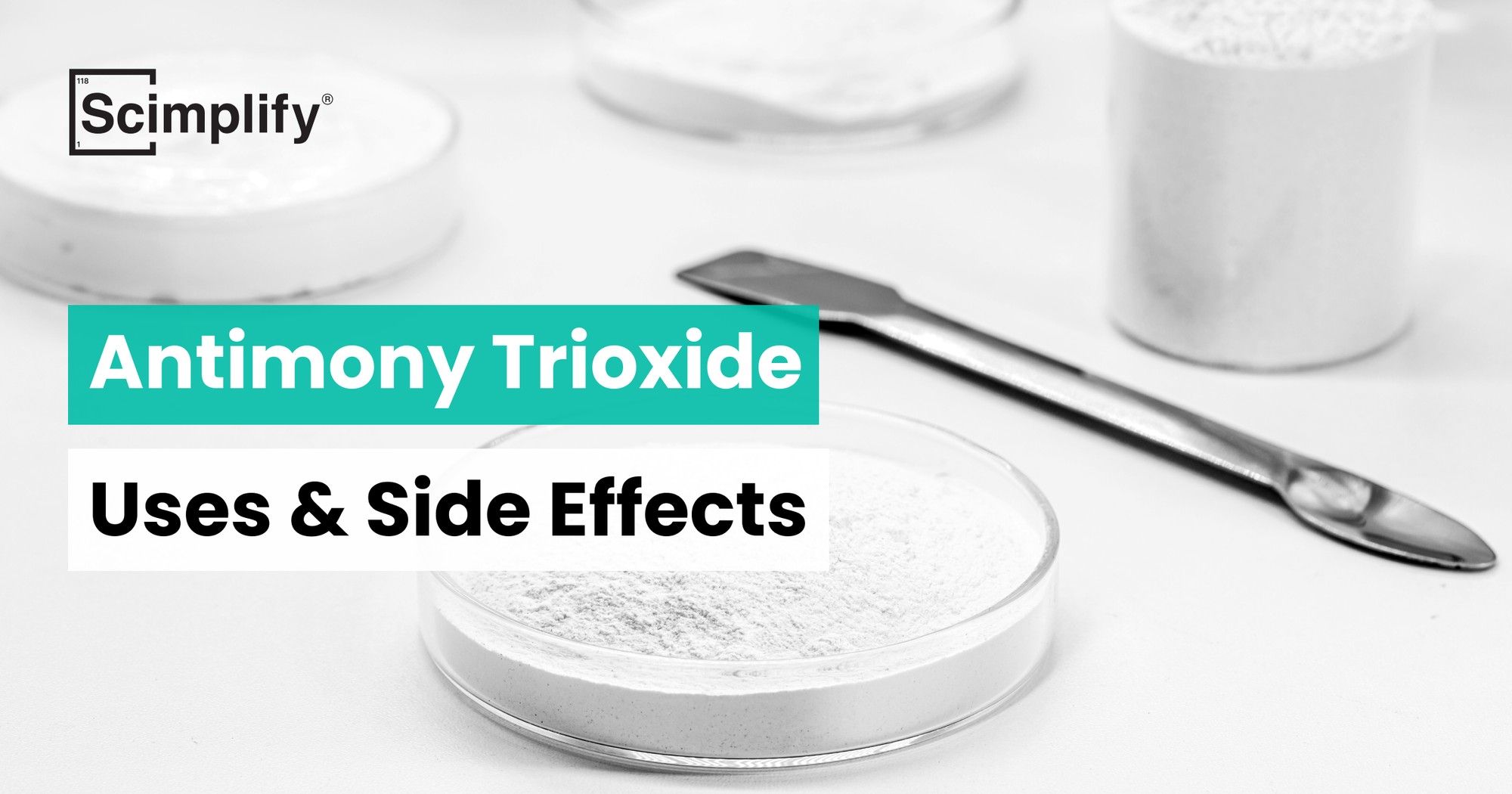Introduction
Antimony Trioxide (Sb 2 O 3 ) is a bright white, fine crystalline powder used for some of the most important and diversified chemical applications. Most familiar to the public as fire retardants, it is also crucial in plastics, textiles, glass making, pigments, and electronics. Its performance benefits are well-established, but worries around toxicity, environmental persistence, and occupational exposure influence how it’s employed and how tightly it’s controlled.
10 uses of antimony trioxide
1. Plastics & Polymers Flame Retardants
Antimony trioxide is primarily used together with a halogen-based flame retardant in the production of flame-retardant polyvinyl chloride. When combined, it promotes formation and lateral extinguishment.
2. Textile Fire-Resistant Treatments
Antimony Trioxide, Sb₂O₃, is used when fireproofing is needed, such as in mattress covers and clothing. It is also used as a fire retardant, particularly in plastics and textiles, such as curtain backing and drapery coating. It is used every day in back coatings and fiber treatment.
3. Glass Manufacturing
In the glass industry, antimony trioxide is used as a fining agent. It tends to remove the gas bubbles during melting and also promotes optical clarity.
4. Ceramic and Porcelain Enamels
Antimony trioxide is frequently used in place of or in addition to tin oxide as an opacifying agent to improve whiteness and opacity in porcelain enamels and ceramic glazes.
5. Pigments and Paints
Antimony trioxide imparts whiteness to enamels, paint pigments, and ceramic glazes. It can also be used as a fire retardant in plastic and textile coatings.
6. Catalyst in PET Resin Production
Antimony trioxide catalyzes the production of polyester, accelerating the polycondensation process. Its success and economy of use have led to its widespread adoption despite pressure for regulation.
7. Electronic Components
Antimony trioxide is used in trace amounts in semiconductor technology and electronic devices. It enhances the conductivity and is used in varistors, thermistors, and infrared detectors.
8. Rubber Compounding
In rubber, antimony trioxide and halogen donors are used to produce flame-retardant foam gaskets, fire hoses, and conveyor belts. These aid in improving fire resistance without compromising elasticity.
9. Friction Materials
Antimony compounds are used as heat stabilizers in various forms of polyvinyl chloride (PVC), including food packaging, pipes, cables, and conduits. It provides uniformity and robust performance under high load.
10. Polyurethane Foams
Sb₂O₃ is also supplemented to hard and soft polyurethane foams to comply with fire safety codes. It is often used in insulation panels and furniture foam.
Learn more about Antimony Trioxide and its chemical properties
Industries where Antimony Trioxide is used
- Chemical Industry
- Glass and Ceramics Industry
- Rubber Industry
- Textiles and Upholstery Industry
- Plastics and Polyesters Industry
- Coatings and Paints Industry
- Fire Safety Equipment
Side Effects and Safety Precautions
The industry is right to treasure antimony trioxide, but it also has its health and environmental problems. Several major international organizations have identified it as a substance of concern.
1. Occupational Health Risks
- Respiratory Exposure: Breathing Sb₂O₃ dust in inadequately ventilated industrial environments can cause lung irritation and lead to pneumoconiosis, a chronic lung disease.
- Skin and Eye exposure: May result in reddening, itching, and irritation. It can cause more serious skin problems with long-term exposure.
- Systemic Toxicity: Systemic effects in animals following chronic exposure have been reported, including liver and cardiovascular effects.
2. Carcinogenic Classification
- The International Agency for Research on Cancer (IARC) has classified Antimony Trioxide as a Group 2B carcinogen, possibly carcinogenic to humans.
- California regulator list also includes Sb₂O₃ as a known carcinogen, and products containing more than tiny amounts of it must be labeled.
3. Environmental Impact
- Aquatic Toxicity: Unprocessed industrial effluents having Sb₂O₃e may be dangerous to marine systems.
- Soil: When it is mixed with other solid waste, it can accumulate in the soil, inhibiting microbial activity and plant growth.
- Bioaccumulator: Not as susceptible to bioaccumulation as heavy metals such as mercury, antimony can still linger in the environment if mismanaged.
Final Thoughts
Antimony Trioxide remains a high-performing, cost-effective flame retardant, especially in applications with strict fire safety standards. But its health and environmental risks place it under growing regulatory pressure. Today, balancing performance with safety is no longer optional; it's a strategic necessity. Whether you’re sourcing or formulating with Sb₂O₃, responsible handling and forward-looking choices are key to staying compliant and competitive.
Explore more about Antimony Trioxide and its supplier.



